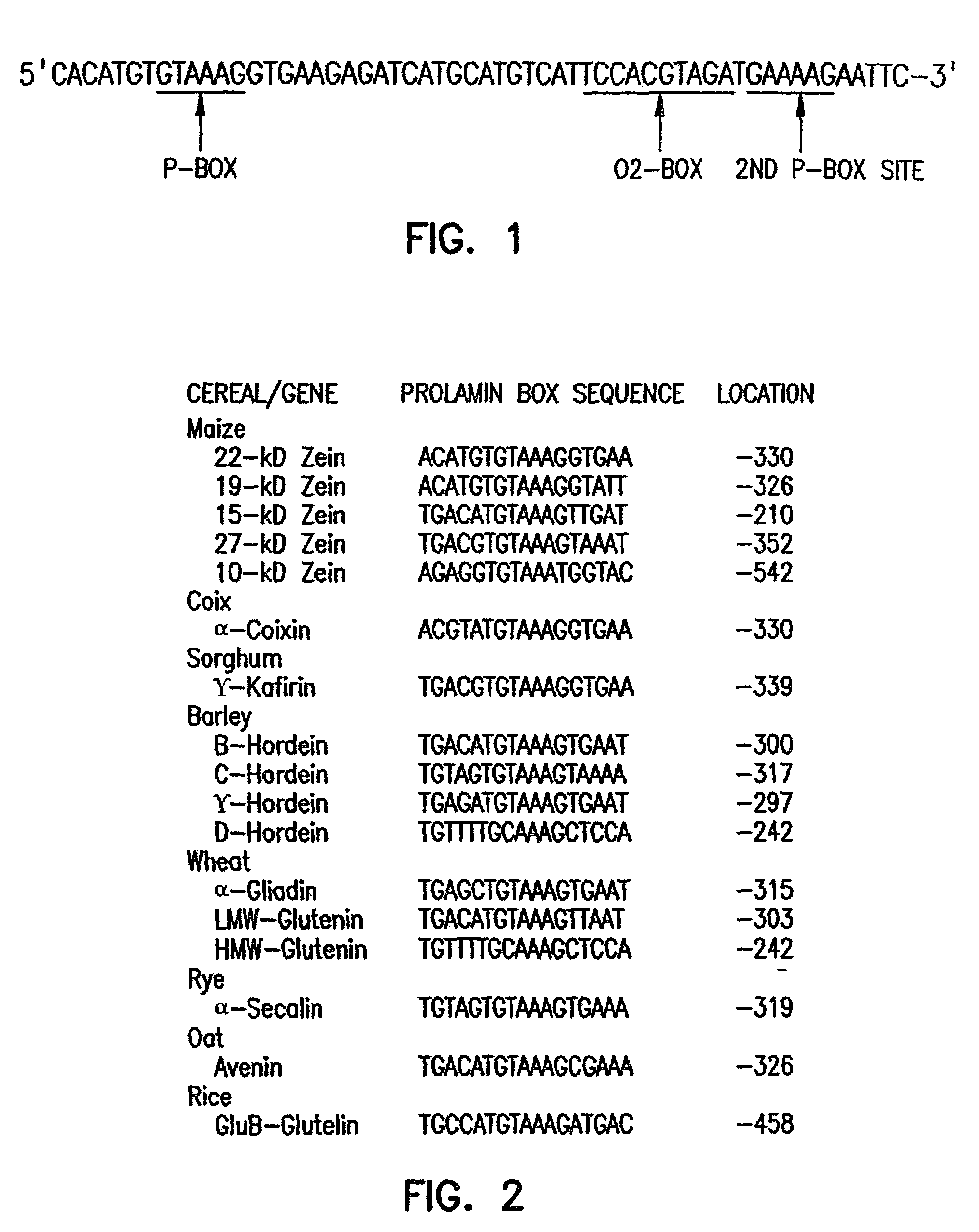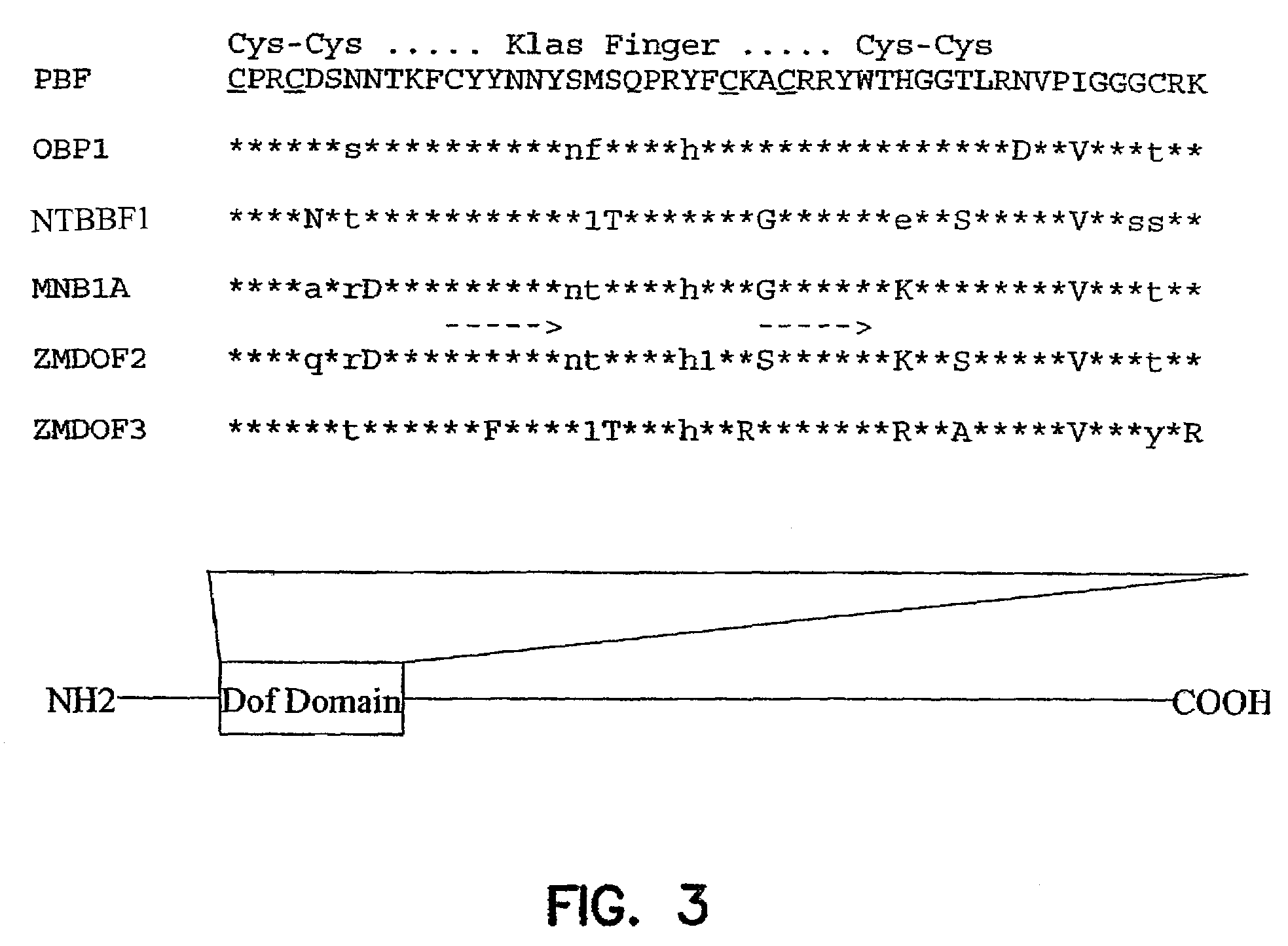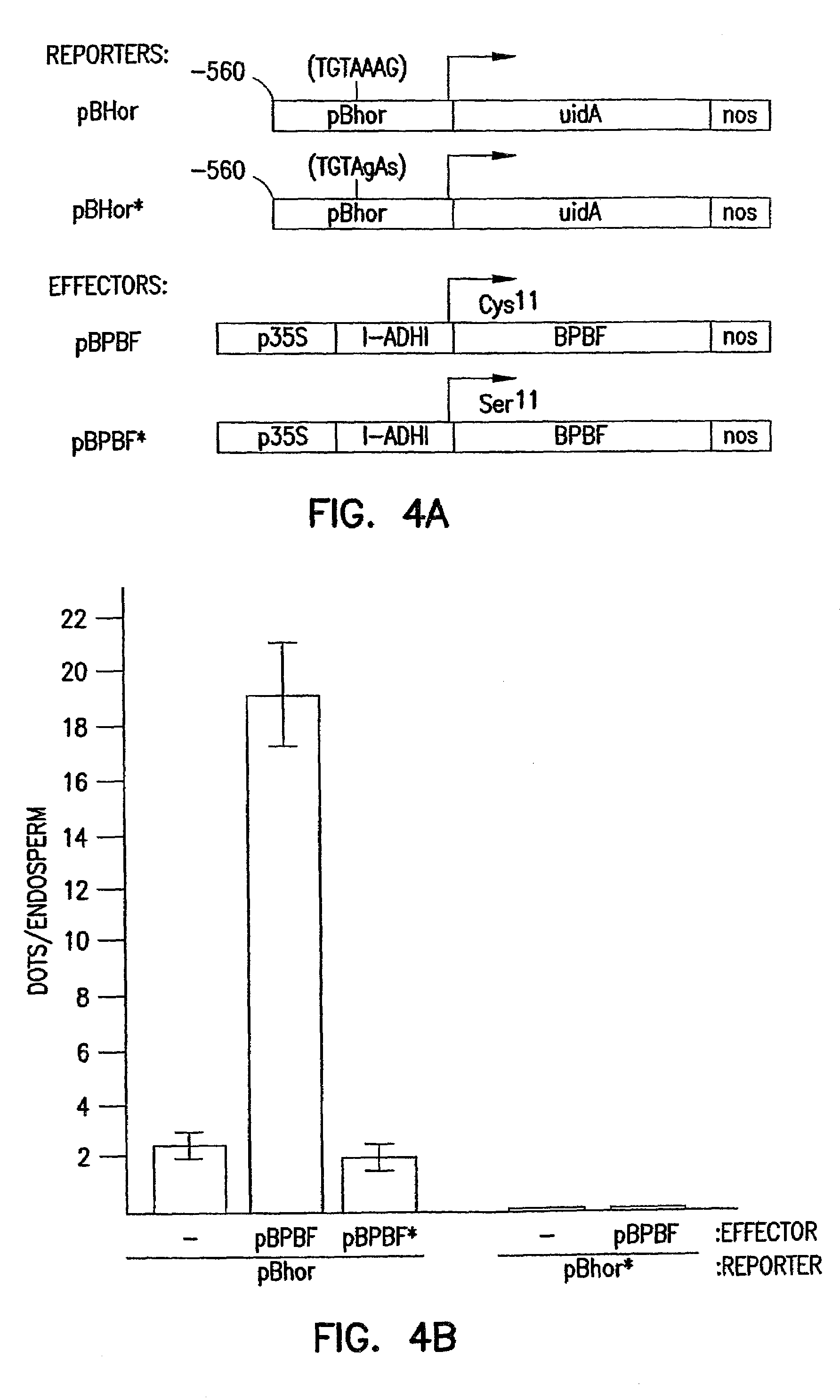Transgenic maize encoding an endosperm specific prolamin box binding factor peptide, which produces seed with increased methionine or lysine conent
a technology of prolamin box and transgenic maize, which is applied in the field of transgenic maize encoding an endosperm specific prolamin box binding factor peptide, to achieve the effects of enhancing lowering the production of -zein, and elevating the level of a preselected amino acid
- Summary
- Abstract
- Description
- Claims
- Application Information
AI Technical Summary
Benefits of technology
Problems solved by technology
Method used
Image
Examples
example 1
Cloning of PBF cDNA
[0089]A reverse transcriptase-PCR approach was used to isolate Dof-encoding cDNAs from maize endosperm. An oligo(dT) tag primer [5′-GTCGACTCTAGAGGATCC(T)12-3′] (SEQ ID NO:26) was used to prime first-strand cDNA synthesis from poly(A)-selected 18-DAP maize endosperm mRNA. The tag primer and two primers derived from conserved residues in the Dof domain (see FIG. 3) were subsequently used in nested PCR amplifications of endosperm cDNA.
[0090]DNA sequencing of the amplified products revealed that the primary product contained a Dof-related sequence. This gene fragment was then used as a probe to screen approximately 1×106 plaques of a cDNA library prepared from maize developing endosperm mRNA (M. J. Aukerman et al., Genes Dev., 5, 310 (1991)). Using either standard or reduced stringency hybridization conditions, 20 hybridizing plaques were identified. Eight of these were plaque-purified and determined by restriction mapping and DNA sequencing to represent the same PBF ...
example 2
Expression of PBF cDNA in E. coli
[0092]For expression of PBF in Escherichia coli, the entire PBF cDNA was first cloned into pBluescript KS. The 1,197-bp NcoI-BamHI fragment from this plasmid, with the NcoI site spanning the start codon, was inserted into NcoI+BamHI-digested pET-11d (Novagen) and transformed into E. coli strain BL21(D3). Overnight cultures harboring either the recombinant PBF clone or the pET-11d vector without insert were diluted 1:10 in Luria-Bertani medium and grown for 3 hr at 37° C. PBF expression was then induced with 1 mM isopropyl β-D-thiogalactoside from the phage T7 promoter for 1 hr at 30° C. Cells carrying the pET-11d vector with no insert were similarly induced. Bacterial extracts were prepared by pelleting the cells, sonicating in the presence of lysis buffer (10 mM Hepes, pH 7.9 / 50 mM KCl / 1 mM EDTA / 1 mM DTT / 0.1 mM phenylmethylsulfonyl fluoride / 05. mg / ml leupeptin / 2 mg / ml aprotinin / 10% glycerol) and freezing at −70° C. Five micrograms of total protein ...
example 3
DNA-Binding Activity of Recombinant PBF
[0093]DNA binding assays were performed essentially as described in R. J. Schmidt et al., Plant Cell, 4, 689 (1992). Three micrograms of protein from endosperm nuclear extracts were incubated in binding buffer at room temperature for 10 min, followed by the addition of 1×105 cpm 32P-labeled double-stranded DNA probes and incubation at room temperature 20 min. Bound complexes were resolved on nondenaturing 4% polyacrylamide gels in 0.25×TBE (90 mM Tris / 64.6 mM boric acid / 2.5 mM EDTA, pH 8.3) at 4° C., dried onto Whatman 3MM paper, and autoradiographed.
[0094]When the cloned cDNA was expressed in E. Coli and bacterial lysates were tested in electrophoretic mobility-shift assays, the cloned Dof protein specifically bound to the P-box in a manner identical to that observed with endosperm nuclear extracts. The maize Dof protein in the bacterial extracts bound with high affinity to the wild-type P-box probe and demonstrated dramatically increased bind...
PUM
| Property | Measurement | Unit |
|---|---|---|
| temperature | aaaaa | aaaaa |
| pH | aaaaa | aaaaa |
| distance | aaaaa | aaaaa |
Abstract
Description
Claims
Application Information
 Login to View More
Login to View More - R&D
- Intellectual Property
- Life Sciences
- Materials
- Tech Scout
- Unparalleled Data Quality
- Higher Quality Content
- 60% Fewer Hallucinations
Browse by: Latest US Patents, China's latest patents, Technical Efficacy Thesaurus, Application Domain, Technology Topic, Popular Technical Reports.
© 2025 PatSnap. All rights reserved.Legal|Privacy policy|Modern Slavery Act Transparency Statement|Sitemap|About US| Contact US: help@patsnap.com



